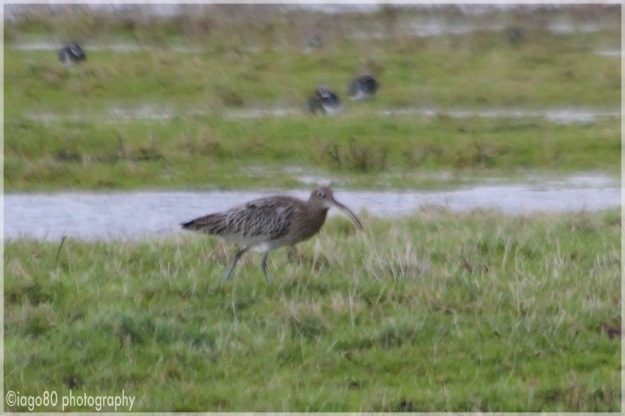The great thing about early year birding is that it is relatively easy to find birds to add to your year list.
Ignoring the weather warnings, I drove to three of the best birding sites in the South East to boost my list: Rainham Marshes (a very brief visit, looking through a fence before they opened); Elmley Marshes; and Cliffe Pools.
At Rainham I quickly ticked off:
- Common Shelduck
- Eurasian Teal
- Northern Pintail
- Northern Lapwing
- Eurasian Collared Dove
- Redwing
- European Goldfinch
… and then (because I was too impatient to wait for it to open) promptly drove on to Elmley Marshes on the Isle of Sheppey …

I first visited Elmley Marshes Nature Reserve in January last year. The wildlife was fantastic despite the terrible weather. Yesterday, it was a bit windy, but a lot nicer. However, when I had a walked a for a couple of miles and turned around to walk back to the car, the strong winds had brought some stormy weather with them. It was like being hit by a wall of stinging vertical rain and hail that was thrown into my face with gale force winds that, at times, stopped me from moving.
I eventually got back to the car, changed my soaking trousers, and drove on to Cliffe.
But, before this, and aside from the 20-30 minute long weather adventure, I also saw some great birds:

Little Egret (Egretta garzetta)

Common Redshank (Tringa totanus)

Dunlin (Calidris alpina)

Eurasian Curlew (Numenius arquata)

Black-tailed Godwit (Limosa limosa)

Ruff (Philomachus pugnax)

Western Marsh Harrier (Circus aeruginosus)
(That last photo was taken hastily through my car windscreen once I had time to stop the car and grab my camera from its bag. By the time I had wound down the window for a better shot, the Harrier had plunged into long grass)
Aside from these birds, I also added the following to my New Year list:
- Common Chaffinch
- Rook
- Meadow Pipit
- Reed Bunting
- Stonechat
- Pheasant
On the way between sites I stopped to look at an estuary and take a picture of a bridge:

Before watching some enormous but very distant flocks of Lapwing and other waders at Cliffe:

I didn’t get any good shots of birds at Cliffe, but I did add the following three to my year-list:
- Common Kestrel
- Pied Wagtail
- Common Goldeneye
I finished the day with a year list of 58 and watched the Sun set over the Thames Estuary:


































